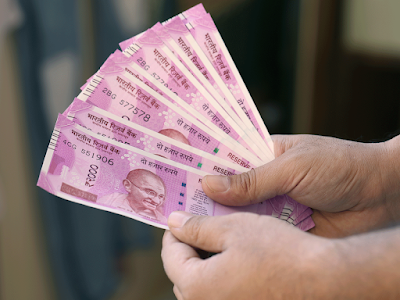The government recently announced the
retirement of the 2000 INR note, officially saying goodbye to a currency note
that had attracted both praise and criticism since its introduction. This bold
action sent shockwaves through India's financial landscape. The Reserve Bank of
India said on May 19, 2023, that it would stop issuing banknotes with the
denomination of Rs. 2000, but the current notes would continue to be accepted
as payment. Individuals have until September 30, 2023, to deposit or exchange
the notes in the bank. Introduced in 2016 as part of the demonetization drive,
the bright magneta-pink coloured note was envisioned as a tool to curb black
money and promote a cashless economy.
The Indian government surprised
everyone by introducing the 2000 INR note in an effort to address the problem
of unaccounted wealth. The vivid pink note was hailed as a symbol of
advancement with cutting-edge security measures to prevent counterfeiting. The
high-denomination currency note initiative had to face a number of obstacles
along the way. The RBI stated that the removal of the 2000 rupee notes is part
of its currency management operations, and now the RBI's Clean Note Policy,
which resulted in the withdrawal of the 2000 rupee note, aims to give the
general public high-quality currency notes and coins with increased security
features.
The printing of Rs. 2000 notes was
discontinued in 2018–19 since there was more demand for other denominations and
the intended goal of meeting the currency requirement had been accomplished.
The government of India last demonetized currency in November 2016, when it
revoked the 500 and 1000 rupee notes in an effort to get rid of counterfeits.
The action overnight removed 86% of the total value of the money in circulation
in the economy. The maximum amount that can be exchanged at once for notes of
Rs 2000 is Rs 20,000. These banknotes can also be exchanged by non-account
holders at any bank branch.
The RBI governor claimed that because
the 2000 rupee notes make up just 10.8% of the total amount of currency in
circulation, the withdrawal of these notes will have very little effect on the
economy. Because there is an adequate supply of banknotes in other
denominations, the withdrawal won't impact daily life or the economy. In a
period of rapid bank development, some economists claimed that the withdrawal
of the higher-value note is a sensible kind of demonetization and may increase
bank deposits. The withdrawal might reduce the pressure on deposit rate
increases, moderate short-term interest rates, and aid in the fight against
corruption and black money. Due to the high currency value, the 2000 INR note
became less practical for everyday transactions, which made businesses
reluctant to accept it. Since lesser denomination notes are easily accessible
in sufficient numbers, the withdrawal of the 2000-rupee notes is not
anticipated to cause a substantial disruption among people.
As every coin has two sides, apart from the positive impact demonetization can have, there can also be a lot of challenges. However, with careful planning, we can prevent the disruptions produced by demonetization in people's daily lives. To lessen the inconvenience experienced by the general population, it will be essential to provide a smooth transition to reduced denominations and enhance the accessibility of digital payment solutions. Additionally, there should be additional initiatives to advance financial literacy and encourage appropriate monetary practises among the general public. In the post-withdrawal situation that we are facing today, educating the public about the advantages of digital transactions, banking services, and the value of financial planning can serve as an asset. The elimination of the 2000 INR note serves as a reminder of the necessity for a balanced and all-encompassing approach to monetary reforms as India evolves towards a more digitised economy. India can pave the way for a more open, inclusive, and cashless future by resolving the issues with counterfeit money and promoting responsible financial practises.


Post a Comment